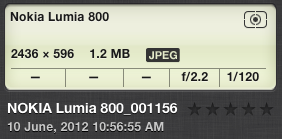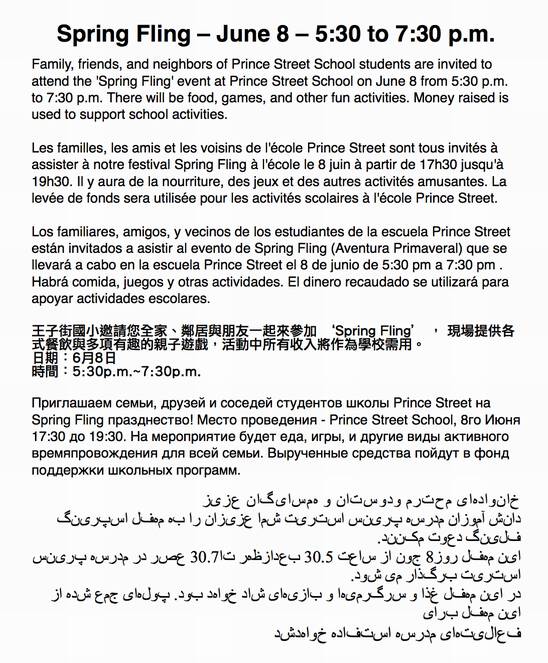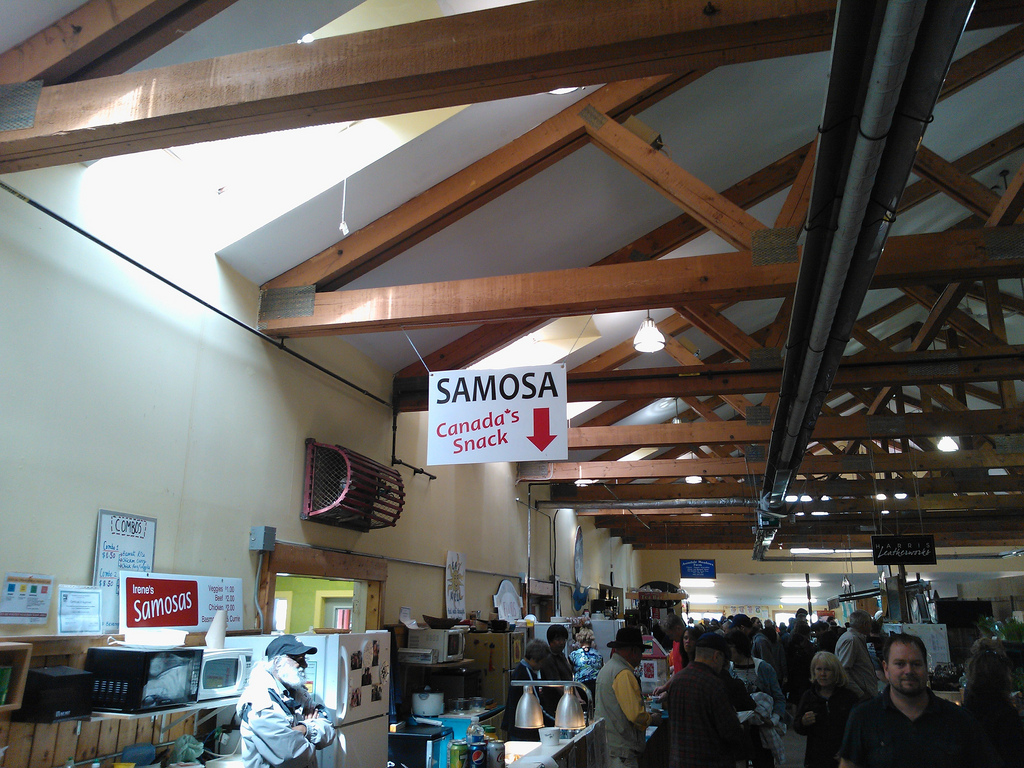I walk down Richmond Street past the Coles Building at least once a day, and for as long as I can remember the clock on the top of the building has been stuck at 7:00.
It started to bother me enough that I decided to see if I could push to have it fixed (this kind of thing seems to happen to me every decade or so, sometimes with catastrophic results).
So I wrote a letter to the Office of the Clerk of the Legislative Assembly. Which advised me to write to the Minister of Transportation and Infrastructure Renewal. Who replied to me quickly that parts were on order.
This morning, en route to the office, I looked up at the clock — a reflex now — and was surprised to see that it no longer read 7:00:

So I snapped a photo. And, as you can see from the timestamp of the photo, the time on the clock matches the time of the photo:

A small victory for fans of public time pieces everywhere, and once again an accurate indicator to me, on the way home, as to whether I’m late for supper or not. Thanks to Hon. Robert Vessey and his staff for making this happen.
We’re having our annual Spring Fling at Prince Street School tomorrow, June 8, from 5:30 p.m. to 7:30 p.m. It’s a great, inexpensive family night out and also the major fundraising event of the year for our Home and School.

You can grab this multilingual flyer as a printable PDF if you’ve got a place to post it today or tomorrow!
I am fascinated by the notion of “telepresence” and so fascinated by this Danish project to virtually link together three playgrounds in different cities in the country. The video below, subtitled (in translation) “Three Danish cities have robotics playgrounds where children can send messages to the light and places in other cities” is from Denmark’s TV 2 broadcaster and is in Danish. But you don’t need to understand Danish to get the project.
I found out about the project from the excellent Malmö-based Medea, which has more details about the project.
Catherine jetted off to New York City this morning for a fun-filled week with our old friend (and erstwhile Islander) Cindy. They’re staying on the Upper East Side at a place that advertises itself as being “a unique setting for reflection, study, fellowship, and prayer.” I’m not sure they plan on doing much of any of that, but who knows what might happen.
In the meantime, this, young Oliver and I are left to fend for ourselves. We did not-so-bad this morning, although when the 8:10 a.m. leave-home-for-school time arrived I realized that I hadn’t completed the final few lunch-preparation steps mandated by Catherine (cut up the fruit, decant the hummus). Next week I won’t have the benefit of the “okay, so I’ve made most of Oliver’s lunch” program backing me up and will have to take things to another level.
If you happen to be in New York City for the next week, and have some sort of radical lesbian poetry knitting festival that you think Catherine needs to attend, please send word.
Oliver and I have a busy program of activities planned, from the downtown schools family fun day and the banquet of the Canadian Home and School Federation tomorrow through to an ambituous home renovation project (or, at the very least, a plan to clear out the front bedroom that’s been accumulating bits and bobs since last summer when it was our dumping ground for all things not required by our summertime renter during our time in Berlin).
So if, over the next week, you see me looking slightly more dedraggled than usual, or witness Oliver with his trousers on backwards or pita bread in his hair, you’ll now have some context.
The PEI Home and School Federation has three representatives on the School Calendar Committee, a committee that includes representation the Department of Education and Early Childhood Development, the school boards, the PEI Teacher’s Federation and CUPE. The committee’s mandate is to develop recommendations about the form of the school calendar, which includes the structure of the school day and of the school year.
The school calendar for 2012-2013 has been set, and so the committee’s current discussions are about the calendar from 2013-2014 and beyond, and, as discussions are in the very early stages, we’re starting with a pretty open playing field, so there’s lots to discuss and deliberate.
One of the things that’s been discussed a lot around the table is Professional Development (“PD” to insiders), and how to best integrate the needs for teachers and staff to learn with the school calendar. As parent representatives to the committee, one of the things we wanted to equip ourselves with to be able to contribute to the discussions was what the financial impact of “PD days” on Island families is. Not because we want to lobby for or against PD days, but simply so we can all be in a better position to understand their impact.
So we’re running a tiny survey, on Facebook, which you’re welcome to fill in (assuming you’re an Island family).
We realize that a Facebook survey has its limitations, but it’s a place to start.
I note, only because it’s the generally accepted practice of old tyme bloggers, that yesterday was the 13th anniversary of this blog, or at least the ancestor of this blog. Here’s post number one, May 31, 1999.
I never imagined that I would be a “purist” in any discipline. But apparently, as regards letterpress printing, I am one.
There are two schools of letterpress printing. In the “old school,” where I am firmly planted, one prints from metal or wood type and, if non-type elements are required, engraved metal plates. In the “new school,” digital designs are output to a polymer plate maker, and the resulting plates are mounted on a base on the press.
I can’t tell you why I’m a purist in this regard, but Michael J. Babcock, a printer in Massachusetts, comes pretty close to expressing one possible rationale in this answer to the FAQ “do you print from polymer plates” on his Interrobang Letterpress site:
What you’ll find, if it matters to you, is that the vast majority of “letterpress” printers out there do fake letterpress. What they do is plastic “platepress”, though they’ll proudly argue until they’re blue in the face telling you they’re letterpress printers. They don’t own any type, and they won’t acknowledge the difference between the genuine process and artifice they engage in.
It would be like someone telling you they baked your wedding cake from scratch, and then you found the empty cake mix box, and frosting tub behind the counter. The end product may taste nice, but it isn’t what you’re being told you’re getting. And you’re being charged for something that doesn’t require the same knowledge, skills, or scarce materials to create.
All day I sit in front of this screen working on my digital work, work that is open to an infinite array of choices and possibilities. The best and worst thing about the networked world is that infinity, and, partially as an antidote to it, I revel in the severe limitations of old school letterpress. There’s something cleansing about being forced to work within immovable limits. And so the notion of “File | Print”-style plate generating seems absurd to me, for it allows the infinite possibilities of the digital world to leak into this.
Even as I type this I realize that it sounds sort of jerky and dismissive and elitist — “I would never bake a cake from a mix!” — but that’s where I’ve ended up, so I might as well be militant about it.
You may recall a post here back in January about a project to bring the home and schools of the five downtown Charlottetown elementary schools together to organize a joint activity together. I’m happy to report that we’ve been meeting over the winter and spring (at each other’s schools, which has been a great learning experience in and of itself) and our activity is happening this Saturday, June 2, 2012 at the University of PEI campus.
We sent out registration sheets to all of the families in the five schools (West Kent, St. Jean, Spring Park, Prince Street and Parkdale) last week, but just in case your family’s sheet didn’t make it home, here are the details.
The “Downtown Schools Family Fun” event runs from 11:00 a.m. to 4:00 p.m. on June 2 at UPEI. Everything is free, and the event is limited to parents, students and other family members of those from one of the five participating schools (families of children entering kindergarten in the fall are welcome). Registration starts at 11:00 a.m. in the foyer of the CARI complex. The following activities are scheduled:
- Atlantic Veterinary College “Teddy Bear Clinic” — bring your teddy bear or other stuffed animal to the vet college where vet students will give it a check-up and treat for any illnesses or injuries. In the AVC foyer.
- Mini-university Activities — a selection of activities from UPEI’s summertime “Mini-University Camps,” all with an emphasis on participation and involvement of everyone in the family. In the AVC gymnasium.
- Mult-Sport Activities — a selection of sports and recreation activities, also geared for everyone in the family. In the AVC gym and, if the weather is good, on the turf field to the north of the CARI complex.
- Open Swim — starting at 2:00 p.m. and runing until 4:00 p.m., in the CARI pool, a free open swim for all attendees in the CARI pool.
- The Provincial School Track and Field Meet is being held on the track next to the CARI complex, and everyone attending our event is welcome to take in some of the action there (admission is free there too).
You can pick and choose which events you want to attend, or do everything. You don’t have to show up right at 11:00 a.m. — the registration desk will be staffed until 1:00 p.m.
We asked families to register in advance on the forms that were sent home last week, but if for some reason yours didn’t, don’t let that stop you from attending: just show up at the registration desk any time after 11:00 a.m. You don’t need “proof of studentship” — it’s on the honour system.
Parking is free (park in the CARI lot behind the pool/rink complex) but we’re encouraging families to take public transit: just tell the driver you’re going to the Family Fun event at UPEI and fare is only $1 per person each way.
The event is happening with the generous support of the UPEI Athletics Department, the CARI complex, principals and parents at the five schools, and with funding from a Parent Leadership Grant from the PEI Home and School Federation.

 I am
I am